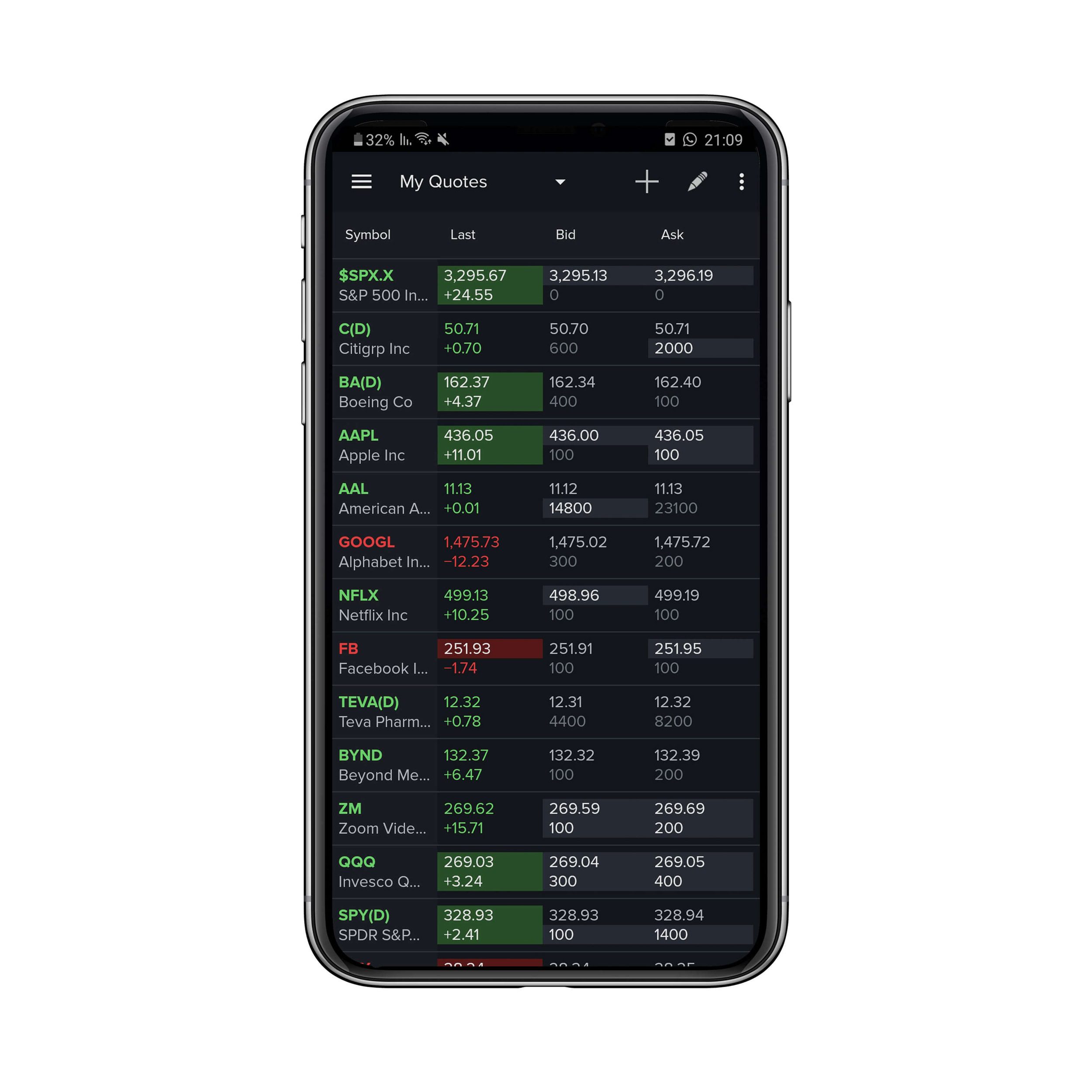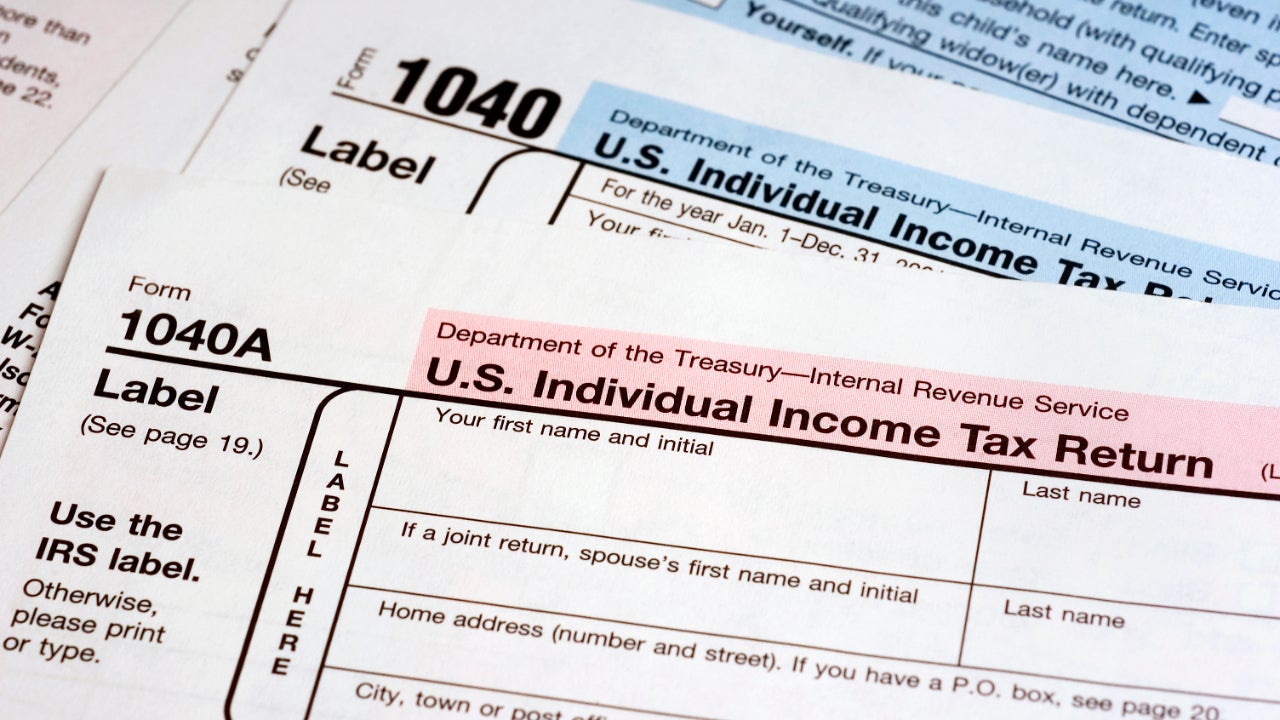

Finance
What Does ODTE Mean In Stocks
Published: January 18, 2024
Discover the meaning of ODTE in stocks and its implications in finance. Explore how ODTE can impact investment strategies and financial decisions.
(Many of the links in this article redirect to a specific reviewed product. Your purchase of these products through affiliate links helps to generate commission for LiveWell, at no extra cost. Learn more)
Table of Contents
Introduction
Welcome to the world of stocks and finance, where understanding the jargon and key indicators is essential for successful trading. One such indicator that plays a crucial role in analyzing stocks is ODTE, an acronym that stands for Order Directional Trading Efficiency. In this article, we will dive into the meaning and significance of ODTE in the stock market.
ODTE is a measure of the efficiency in which orders are executed in the stock market. It provides valuable insights into the dynamics of price movements and the effectiveness of trading strategies.
When delving into the world of finance and investing, it is vital to have a solid grasp of the various indicators that professionals use to make informed decisions. ODTE is one such indicator that can shed light on the efficiency and effectiveness of trades within the context of the stock market. By understanding how ODTE is calculated and its implications on stock trading, investors and traders can gain an edge in their decision-making process.
In the following sections, we will explore in detail the definition of ODTE, how it is calculated, its importance in analyzing stocks, its comparison with other stock indicators, and its application in stock trading. We will also discuss the benefits and risks of using ODTE and provide some real-life examples to illustrate its significance in the stock market.
So, if you’re ready to delve into the world of ODTE and how it can impact your investment decisions, let’s dive into the details!
Definition of ODTE
Order Directional Trading Efficiency (ODTE) is a quantitative measure used in the stock market to assess the efficiency of order executions. It provides insights into the speed and effectiveness with which buy and sell orders are matched and executed in a given trading session.
At its core, ODTE evaluates the ability of the stock market to quickly process and execute orders, reflecting the liquidity and depth of the market. It takes into account various factors such as order size, price impact, order flow dynamics, and the time taken to execute trades.
ODTE is often calculated as a ratio or percentage, reflecting the proportion of orders that were executed successfully and promptly relative to the total number of orders placed. A higher ODTE value indicates a more efficient and liquid market, where orders are executed quickly and with minimal price impact.
It is important to note that ODTE is not only applicable to individual trades but also to aggregated order flows within a specific time window. By monitoring ODTE over different time periods, analysts can gain insights into how efficiently the market is functioning, the presence of sharp price movements, and how well trading strategies are performing in terms of execution.
In summary, ODTE is a quantitative metric that provides a snapshot of how efficiently buy and sell orders are executed in the stock market. It helps traders and investors gauge the liquidity, depth, and overall effectiveness of the market in processing orders. By understanding ODTE, market participants can make more informed decisions and adapt their trading strategies accordingly.
How ODTE is Calculated
Calculating ODTE involves analyzing various components and factors related to order execution in the stock market. While there may be slight variations in the specific calculation method used by different analysts and platforms, the fundamental principles remain the same.
Here are the key factors typically considered when calculating ODTE:
- Order Execution Time: The time elapsed between placing an order and its successful execution is an essential element in ODTE calculation. Orders that are executed quickly and efficiently contribute to a higher ODTE score.
- Price Impact: The degree to which the execution of an order affects the stock’s price movement is another critical factor. Ideally, a low price impact indicates a more efficient execution process, resulting in a higher ODTE value.
- Fill Rate: The fill rate refers to the percentage of orders that are successfully executed relative to the total number of orders placed. A higher fill rate contributes to a higher ODTE score as it reflects efficient order matching.
- Order Size: The size of the orders placed is also considered when calculating ODTE. Efficient execution of large orders without significant price impact indicates a well-functioning market and contributes to a higher ODTE value.
The specific formula used to calculate ODTE may vary, but it typically involves combining these factors to derive an overall efficiency score. The formula may take into account weighted averages or other statistical calculations to reflect the relative importance of each factor.
It is worth noting that the calculation of ODTE is not standardized across all platforms or market participants. Some may incorporate additional factors or use proprietary algorithms to enhance the accuracy of the calculation. Therefore, it is crucial to understand the specific methodology employed when assessing ODTE values.
Overall, ODTE is calculated by analyzing the execution time, price impact, fill rate, and order size. By considering these factors, traders and analysts gain insights into the efficiency of order execution and the quality of the market in providing liquidity.
Importance of ODTE in Stocks
ODTE holds significant importance in analyzing stocks and making informed investment decisions. Let’s explore why ODTE is a crucial indicator:
- Efficiency of Order Execution: ODTE provides insights into how efficiently orders are executed in the stock market. With a high ODTE value, traders can have confidence that their orders will be executed quickly and at a favorable price. This efficiency is especially important for active traders and those executing time-sensitive trading strategies.
- Liquidity and Depth Assessment: ODTE helps gauge the liquidity and depth of the market. A high ODTE value indicates a liquid market with ample trading volume, making it easier to buy and sell stocks without significantly impacting prices. This is particularly valuable for institutional investors and traders dealing with large order sizes.
- Evaluation of Trading Strategies: By tracking ODTE, traders can evaluate the effectiveness of their trading strategies. A consistently high ODTE score suggests that a trading strategy is well-suited to the market conditions and capable of executing orders efficiently. Conversely, a declining ODTE value may indicate the need for adjustments to the strategy to adapt to changing market dynamics.
- Market Transparency: ODTE promotes market transparency by revealing the speed and efficiency of order executions. This information allows investors to assess whether the market is fair and equitable, with all participants having equal access to trade execution opportunities. This transparency builds trust among market participants and encourages efficient trading practices.
- Indicator of Market Quality: ODTE serves as a quality indicator of the stock market. A consistently high ODTE score suggests a well-functioning and efficient market, attracting more investors and increasing market participation. On the other hand, a low ODTE value may indicate potential liquidity issues or inefficiencies that could deter investors.
Overall, ODTE is a critical measure in stock market analysis as it provides valuable insights into order execution efficiency, market liquidity, and the evaluation of trading strategies. By incorporating ODTE into their decision-making process, investors and traders can enhance their understanding of the market and make more informed investment choices.
ODTE vs Other Stock Indicators
When analyzing stocks, there are various indicators available that provide valuable insights. It’s important to understand how ODTE compares to other stock indicators to fully grasp its significance. Here’s a comparison of ODTE with some commonly used stock indicators:
- Volume: Volume measures the number of shares traded in a given period. It indicates market activity and interest in a particular stock. While volume provides an overall picture of market participation, ODTE focuses specifically on the efficiency and speed of order execution. It reveals how efficiently orders are matched and executed, providing a more nuanced view of market dynamics.
- Liquidity: Liquidity refers to the ease of buying or selling shares without significantly affecting prices. While ODTE is closely related to liquidity, it goes beyond a simple liquidity measure. ODTE assesses the efficiency of order execution, taking into account factors such as execution time, price impact, and order size, providing a more comprehensive perspective of market liquidity.
- Spread: The spread is the difference between the bid and ask prices of a stock. It represents the cost of trading and liquidity. ODTE considers the spread as it affects price impact, but it goes beyond just the spread itself. ODTE incorporates additional factors such as execution time and order size to provide a more detailed assessment of order execution efficiency.
- Volatility: Volatility measures the magnitude and frequency of price fluctuations in a stock. While ODTE indirectly reflects price impact, it primarily focuses on the efficiency of order execution rather than price movements. ODTE helps identify how efficiently orders are executed despite market volatility, emphasizing the speed and effectiveness of trading strategies in executing orders during volatile periods.
- Execution Quality: Execution quality measures the overall effectiveness of order execution, taking into account factors such as price improvement and order fill rates. ODTE is similar to execution quality as it evaluates the fill rate and price impact, but it specifically emphasizes the efficiency and speed of order execution, providing a more focused assessment.
While these indicators provide valuable information in their respective areas, ODTE stands out by combining various elements such as execution time, price impact, fill rate, and order size to assess the efficiency of order execution comprehensively. It offers a unique perspective on how effectively trades are executed, helping investors and traders make informed decisions regarding order placement and execution strategies.
Ultimately, incorporating ODTE alongside other stock indicators provides a more holistic view of market dynamics, liquidity, and trading efficiency, enabling market participants to optimize their investment strategies and navigate the stock market with greater confidence.
Application of ODTE in Stock Trading
ODTE plays a vital role in stock trading, offering valuable insights to traders and investors. Here are some key applications of ODTE in the realm of stock trading:
- Execution Strategy Optimization: By monitoring ODTE, traders can assess the efficiency of their execution strategies. A high ODTE value signifies that their trades are executed promptly and with minimal price impact. This information allows traders to fine-tune their execution strategies and maximize their trading profits.
- Order Placement: ODTE can guide traders in deciding where and how to place their orders. A high ODTE value indicates a liquid and efficient market, making it easier to place orders without significant price impact. Traders can utilize ODTE to identify the best markets or trading venues to execute their orders efficiently.
- Identifying Market Opportunities: ODTE can uncover potential market opportunities for traders. By analyzing ODTE values across different stocks or sectors, traders may identify stocks with high ODTE scores, suggesting strong order execution efficiency. These stocks may present favorable trading opportunities and attract increased market interest.
- Quantitative Trading Models: Quantitative traders and algorithmic trading systems can incorporate ODTE as a factor in their trading models. By combining ODTE with other indicators and data points, traders can create more robust and accurate models for automated trading. ODTE can serve as a valuable input in developing strategies that thrive in fast-paced and efficient markets.
- Market Monitoring: ODTE allows traders to monitor the efficiency and liquidity of the market in real-time. By keeping an eye on ODTE trends and changes, traders can stay informed about market conditions, potential shifts in liquidity, or changes in order execution efficiency. This information helps traders adjust their strategies accordingly and make educated trading decisions.
Overall, ODTE provides traders with actionable insights to optimize execution strategies, identify potential market opportunities, and make data-driven trading decisions. By leveraging ODTE in their trading analysis, traders can enhance their performance, minimize costs, and capitalize on the efficiencies of the stock market.
Benefits and Risks of Using ODTE
Utilizing ODTE as a stock market indicator offers several benefits, but it also comes with certain risks. Let’s explore the advantages and potential drawbacks of using ODTE:
Benefits:
- Insights into Execution Efficiency: ODTE provides valuable insights into the efficiency and speed at which orders are executed in the stock market. This information helps traders and investors optimize their order placement and execution strategies, minimizing price impact and improving trading outcomes.
- Market Transparency: ODTE promotes market transparency by revealing the execution dynamics and liquidity conditions in the market. Traders can assess if the market is fair and equitable, with all participants having equal access to execution opportunities. This transparency fosters trust among market participants and encourages efficient trading practices.
- Identification of Market Opportunities: By monitoring ODTE values, traders can identify stocks or sectors with high order execution efficiency. Stocks with high ODTE scores may present favorable trading opportunities due to the liquidity and efficiency of their markets, attracting increased market interest.
- Validation of Trading Strategies: ODTE allows traders to evaluate the effectiveness of their trading strategies. A consistently high ODTE score suggests that a trading strategy is well-suited to the market conditions and capable of executing orders efficiently. This validation can enhance trader confidence and lead to improved trading performance.
Risks:
- Data Reliability: The accuracy and reliability of ODTE data can vary depending on the source or platform used. Traders must carefully consider the data provider’s credibility and ensure they have access to reliable and up-to-date information to make informed trading decisions.
- Dependency on Market Conditions: ODTE is influenced by the prevailing market conditions, such as overall market liquidity and volatility. Changes in market dynamics can impact ODTE, potentially affecting execution efficiency. Traders should be aware that ODTE may fluctuate and adjust their trading strategies accordingly.
- Potential Over-Optimization: Relying heavily on ODTE as the sole indicator for trading strategies may lead to over-optimization. Traders should incorporate a diverse range of indicators and factors in their decision-making process to avoid potential biases and ensure a well-rounded analysis of the market.
- Market Manipulation: While ODTE reflects the efficiency of order execution, it does not provide insights into potential market manipulation or fraudulent activities. Traders must remain vigilant and consider other indicators and market analysis to identify any unusual or illegitimate trading activities.
Despite these risks, when used appropriately and in conjunction with other indicators, ODTE can provide valuable insights and enhance decision-making in stock trading. Traders should exercise caution, conduct thorough research, and continually adapt their strategies to changing market conditions for optimal results.
Examples of ODTE in Stocks
To illustrate the significance of ODTE in stock trading, let’s explore a couple of examples that highlight the application of ODTE in real-life scenarios:
Example 1: Technology Stocks
Suppose a trader is interested in analyzing the order execution efficiency of technology stocks. By calculating ODTE for a basket of technology stocks over a specific time period, the trader can compare the efficiency levels across different stocks.
After performing the calculations, the trader discovers that Stock A has a consistently high ODTE score compared to its peers. This suggests that Stock A has a more liquid and efficient market, meaning its orders are executed swiftly and with minimal price impact.
Armed with this information, the trader may consider incorporating Stock A into their trading strategy, particularly if they actively trade technology stocks. The high ODTE score indicates a higher probability of executing trades at desired prices and with little slippage, leading to improved trading outcomes.
Example 2: Penny Stocks
Now let’s consider a trader interested in trading penny stocks. Penny stocks typically have lower liquidity and higher price volatility, making efficient order execution crucial for maximizing profits and minimizing risks.
By monitoring ODTE for a selection of penny stocks, the trader can identify stocks with high ODTE scores, suggesting a more efficient order execution process. These stocks may have sufficient trading volume and depth, enabling traders to enter and exit positions without significantly impacting prices.
Conversely, by identifying low ODTE scores among penny stocks, traders can exercise caution and consider adjusting their trading strategies. A low ODTE score may indicate potential challenges in executing trades efficiently, such as wider bid-ask spreads or insufficient market depth.
In both examples, ODTE serves as a valuable tool for traders, providing insights into the order execution efficiency of different stocks. By incorporating ODTE into their analysis, traders can make more informed decisions, optimize their strategies, and potentially improve their trading outcomes.
Conclusion
Order Directional Trading Efficiency (ODTE) is a critical indicator in the world of stocks and finance. By assessing the efficiency and effectiveness of order executions, ODTE offers valuable insights into the dynamics of price movements and the overall liquidity of the market.
In this article, we explored the definition and calculation of ODTE, highlighting its importance in analyzing stocks. We discussed how ODTE compares to other stock indicators and its application in stock trading, including strategy optimization, order placement, and market monitoring.
Using ODTE can provide numerous benefits, such as optimizing execution strategies, identifying market opportunities, and validating trading approaches. However, it’s crucial to consider potential risks associated with data reliability, dependency on market conditions, over-optimization, and market manipulation.
Finally, we examined examples of ODTE in real-life scenarios, showcasing its practical application in analyzing technology stocks and penny stocks. These examples demonstrated the ability of ODTE to guide traders in making informed trading decisions and improving trading outcomes.
In summary, ODTE is a valuable tool for traders and investors, offering insights into order execution efficiency and market liquidity. By leveraging ODTE alongside other indicators and market analysis, market participants can navigate the stock market more effectively and make well-informed investment decisions.














